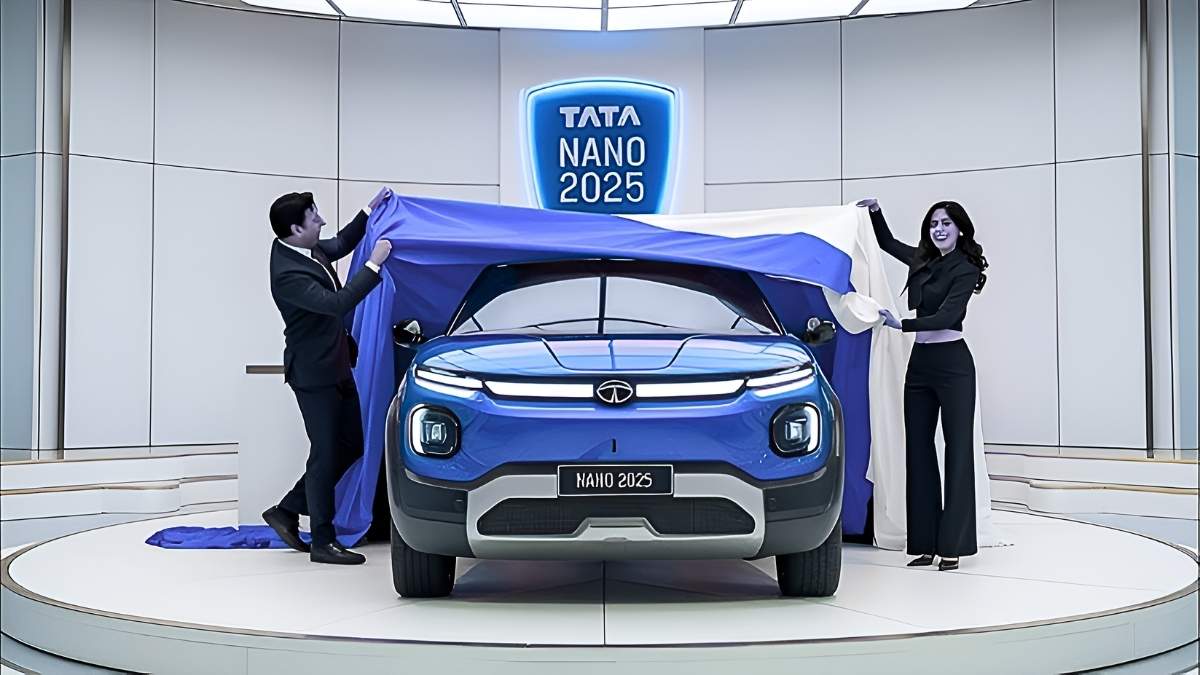The Tata Nano is a name that has always captured attention in the Indian automobile world. Known originally for being the most affordable car in the country, the Nano represented simplicity, accessibility, and innovation. After several years of silence, Tata Motors has now turned that legacy into something far more ambitious. The Tata Nano EV 2025 is not just a remake of the classic budget car; it is a fully modern electric hatchback designed for the future. With an impressive 380 km driving range, advanced smart features, and integrated AI assistance, the Nano EV aims to redefine what an affordable electric vehicle can be in India. This article explores the design, performance, technology, and overall experience of the upcoming Tata Nano EV 2025.
Exterior Design and First Impressions
The 2025 Nano EV carries forward the signature compact form factor that made the original model so convenient. However, the design has been completely updated to match modern EV styling trends. The front fascia features sleek LED headlamps and a smoother aerodynamic nose that reduces drag and improves efficiency. The closed grille design gives the Nano EV a futuristic appearance, while clean lines across the body help the car look more refined and contemporary.
Despite its small footprint, the Nano EV has a confident stance. The slightly larger wheels, improved ground clearance, and stylish rear light bar give the car a youthful and energetic personality. Tata Motors has clearly focused on creating a design that appeals not only to first-time buyers but also to urban customers who want something fresh, smart, and easy to drive in crowded cities.
Interior and Cabin Comfort
Stepping inside the 2025 Nano EV feels like entering a completely new vehicle. The cabin layout is simple yet modern, with a clean dashboard, digital instrument cluster, and an integrated touchscreen infotainment system. Materials used in the interior have been improved, giving the cabin a more premium feel compared to older Nano models.
The seating position is upright and offers good visibility, which is ideal for city driving. While the car remains compact, smart packaging ensures that passengers enjoy adequate headroom and legroom for daily use. The rear seats are comfortable for short to moderate journeys, and the boot space is practical enough for essentials and small luggage. Tata’s focus seems to be on delivering comfort without compromising the Nano’s compact and convenient nature.
Smart Features and AI Technology
Technology plays a huge role in the appeal of the 2025 Nano EV. The integration of AI-based systems is one of the car’s most highlighted features. The AI driving assistant can understand voice commands, manage navigation, suggest efficient routes, and help optimize battery usage based on driving patterns. This intelligent support system is designed to make the Nano EV feel responsive and user-friendly, especially for new EV users.
Smart features include wireless smartphone connectivity, over-the-air updates, keyless entry, remote climate control, and an app-based vehicle management system. Through the mobile app, owners can check charging status, lock or unlock the car, pre-cool the cabin, and monitor driving data. These additions help the Nano EV stand out in a segment where affordability usually means limited technology.
Performance and Driving Dynamics
The Tata Nano EV 2025 is powered by an electric motor tuned for smooth acceleration and efficient city driving. While it is not made for high-speed performance, the motor provides quick response at lower speeds, making the car nimble and easy to handle in traffic. Its compact dimensions allow for sharp turns and effortless parking, something that is especially useful in busy urban environments.
Ride quality has been improved through better suspension tuning and a stronger chassis. The lightweight design of the Nano EV helps it remain agile, while the electric powertrain keeps the driving experience quiet and vibration-free. On highways, the car performs best at moderate speeds, and the stable steering ensures a confident feel on straight stretches.
Battery and 380 KM Range
One of the biggest talking points of the Nano EV 2025 is its long 380 km range, which sets it apart in the entry-level EV category. This range allows most drivers to cover several days of city commuting without needing to charge frequently. The battery pack has been designed with efficiency in mind, and Tata Motors has focused heavily on making the Nano EV practical for everyday use.
The car supports both home charging and fast charging. With a regular home charger, overnight charging is easy and convenient. Fast charging, on the other hand, can juice up the battery significantly in a much shorter time, making the Nano EV ready for longer journeys or sudden travel plans. This combination of a strong range and adaptable charging options makes the Nano EV a promising choice for budget EV buyers.
Price and Market Position
Tata Motors is expected to keep the Nano EV competitively priced to attract first-time electric vehicle buyers. The aim is to offer an EV that is affordable without feeling stripped-down or basic. With rising fuel prices and increasing awareness of electric mobility, the Nano EV arrives at a perfect moment for the Indian market. Tata’s strong charging infrastructure and brand trust also give it an edge.
Key Highlights
• Futuristic compact design with improved aerodynamics
• Comfortable and upgraded cabin with modern features
• AI-powered assistant with advanced voice and driving support
• 380 km driving range suitable for city and short highway trips
• Smooth electric performance ideal for daily commuting
• Multiple smart features including OTA updates and app control
• Competitive pricing expected for mass-market adoption
Final Words
The Tata Nano EV 2025 represents a bold step forward for one of India’s most iconic car names. Instead of simply reviving an old model, Tata Motors has transformed the Nano into a modern electric vehicle that focuses on efficiency, smart technology, and accessibility. With its impressive range, advanced features, and compact design, the Nano EV has the potential to become a game-changing option for urban drivers and first-time EV buyers. If Tata delivers the expected value at an affordable price point, the Nano EV 2025 could very well become one of the most significant electric vehicles in the Indian market.




